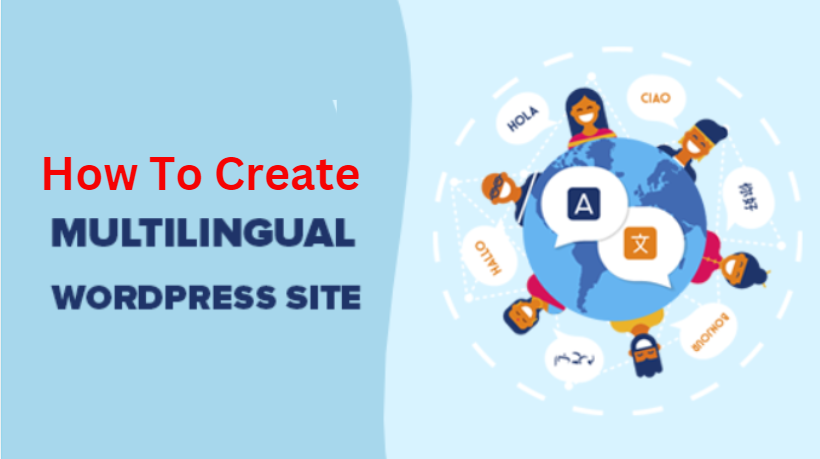Introduction
In today’s global marketplace, offering your website in multiple languages is a powerful way to connect with international audiences. Whether you’re a business owner, marketer, or developer, creating a multilingual website can help you expand your reach, improve user experience, and build trust. In this post, we’ll guide you through the essential steps for creating a successful multilingual website.
Why a Multilingual Website Matters
A multilingual website isn’t just about translating words; it’s about delivering an engaging experience to a broader audience. Here’s why it’s important:
- Reach a global audience: You’ll open doors to new markets and customers.
- Enhance user experience: Visitors feel more comfortable browsing in their native language.
- Improve your SEO globally: Ranking for keywords in different languages helps improve your visibility across various regions.
- Boost credibility: A multilingual site signals to users that your business cares about their needs and preferences.
Step 1: Choose the Right Platform
The foundation of your multilingual website starts with the platform you use. Many website builders and content management systems (CMS) offer support for multilingual functionality, either built-in or through plugins and apps.
- WordPress: A popular choice with a variety of plugins like WPML or Polylang for adding multiple languages.
- Shopify: You can use apps like Langify to manage translations for e-commerce websites.
- Wix: Wix’s multilingual tool allows you to create and manage different language versions easily.
Tip: Select a platform that provides flexible language support, allowing you to control the translation, design, and structure for each version.
Step 2: Identify Target Languages and Markets
Before diving into translation, decide which languages will best serve your business objectives.
- Analyze your audience: Use insights from analytics tools to determine where your current traffic comes from and which regions are key to your business.
- Prioritize key languages: Start by offering the most relevant languages based on your audience. Common choices include English, Spanish, Mandarin, French, and German, but this will depend on your specific market.
Step 3: Use Professional Translation Services
To ensure high-quality and culturally appropriate translations, avoid relying solely on automated tools. Instead, opt for professional translation services.
- Native speakers: Hire translators who are native to the language they’re working on to avoid inaccuracies and awkward phrasing.
- Localization: Go beyond literal translation. Adjust your content to account for cultural norms, idiomatic expressions, and regional differences.
Example: If you’re targeting customers in Spain and Mexico, you’ll want to adapt your Spanish content to reflect the different dialects and cultural contexts.
Step 4: Optimize for Multilingual SEO
Creating a multilingual website means optimizing for search engines in different languages and regions. This ensures that your content ranks well across various countries.
- Hreflang tags: These tags inform search engines about the language and target region of each page, ensuring the right content appears to the right users.
- Language-specific URLs: Consider using language-specific subdomains or subdirectories, such as
enfor English orfrfor French, to help with SEO. - Keyword research: Research the appropriate keywords in each language to align with local search trends.
Step 5: Design an Effective Language Switcher
Your visitors should be able to switch between languages easily. A well-designed language switcher is essential for a seamless user experience.
- Visibility: Place the language switcher in a highly visible area of your site, often in the top-right corner.
- Flags and text: Include both language names and country flags for clarity, but remember to consider cultural sensitivities when using flags.
Step 6: Maintain Consistency Across All Languages
When managing a multilingual site, consistency is key. All versions of your website should offer the same design, content quality, and user experience.
- Consistent design: Ensure that fonts, colors, and layouts remain the same across different language versions.
- Simultaneous updates: Keep each version of your site updated at the same time, ensuring new content or promotions are available in all languages.
Step 7: Test and Monitor Performance
Before launching your multilingual website, thoroughly test every version to ensure everything is functioning correctly.
- Test the language switcher: Make sure it works seamlessly and leads users to the right language version of the page.
- Check for localization errors: Review currency, date formats, and contact details to ensure they’re localized for each region.
- Monitor user engagement: Use analytics to track visitor behavior across different language versions and identify opportunities to improve the experience.
Conclusion
Creating a multilingual website allows you to reach and engage a global audience while offering a personalized experience to users in different regions. By carefully selecting the right platform, utilizing professional translation services, and optimizing for multilingual SEO, you can build a website that resonates with diverse users worldwide.
If you’re ready to take your website to the next level by adding multilingual support, contact MDA Websites to ensure a smooth and successful process. Their expert team can guide you through every step of building a multilingual website tailored to your needs.
